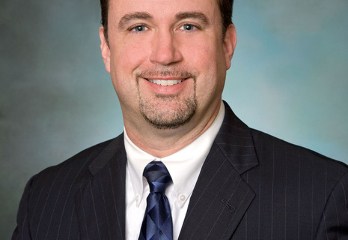Three figures illustrate Medicare’s condition in its 50th year:
• $12,430: The program’s per capita spending in 2014.
• 2030: The year Medicare will become insolvent.
• 90 percent: The share of oldsters who, in 2014, told the Kaiser Family Foundation that Medicare was “important” to them and their families.
Understand the final stat, and it’s easy to see why insolvency is a decade and a half away. No welfare program — not even FDR’s sainted Social Security — enjoys more popularity than Medicare.
And welfare it is. According to the Urban Institute, a married, average-wage couple retiring this year will incur $422,000 in Medicare expenses before they die. The amount of taxes the two paid to qualify for the disbursement? An appallingly stingy $140,000.
A single man with low pay ($22,500 in 2015) will do doubly better — $32,000 in Medicare taxes, $195,000 in costs. Even high-earners come out ahead — a single woman with annual income of $119,100 will collect $227,000 in benefits, well above her lifetime taxes of $160,000.
Medicare’s financial precariousness, the National Center for Policy Analysis’s Devon Herrick writes, “is the most serious domestic policy problem this country faces in the 21st century.” One can quibble with the claim — a cratering work ethic and a 40 percent illegitimacy rate might constitute graver threats — but the numbers are not in dispute.
Herrick’s new paper, “Reforming Medicare with Personal Accounts, Incentives and Better Plan Design,” starts with an explanation of how cost-containment efforts have failed. “Diagnosis related groups” were tried in the 1980s, in an effort to “pay hospitals fixed fees for each inpatient admission based on a diagnosis.” In the 1990s, the “sustainable growth rate” attempted “to automatically reduce physician payments.”
Both reforms failed, the health economist documents, because they did not address Medicare’s basic dysfunctionalities. The revenue-gobbling behemoth “places few limits on the services consumed,” while enrollees “bear little of the cost if they are wasteful and benefit little when they consume care prudently,” and “providers have few financial incentives to contain costs and keep beneficiaries out of the hospital.”
What’s needed is a complete overhaul — “fundamental reform,” not tinkering with half-measures. Raising the age of eligibility by a few years is popular with some wonks, but Herrick explains why the change won’t amount to much: “One-third of Medicare spending is on seniors in the last year of life. Seniors who have recently turned 65 or 66 don’t require much health care compared to those turning 85 or 86.”
Herrick’s solution is “a health spending account seniors themselves control — an idea known as prefunding.” The system would be funded by workers and employers, and reward doctors “for keeping seniors healthy,” permitting them “to profit from innovations that lower costs and raise the quality of care.”
“Medicare Health Savings Accounts” would be high-deductible plans “with potentially little-to-no cost sharing above a $5,000 deductible, indexed to medical inflation.” That sounds like a princely sum, but Herrick notes that on average, “seniors spend more than $3,000 annually on medical care not covered by Medicare,” with another $2,000 committed to Medigap policies.
Prefunding, according to an actuarial analysis conducted for NCPA in 2012, would yield substantial savings, driven by “better incentives that reduce the rate of healthcare inflation,” “reduced use of benefits by seniors” and “increased cost-sharing.” The economic payoff would be substantial — Medicare’s portion of GDP would not double by 2053, as it is now predicted to do, but remain at the current level, 3.5 percent.
Herrick’s plan for patients to “manage their own health care funds,” and thus “make prudent decisions,” doesn’t go far enough for liberty-lovers who desire a severance of health care and state. But its value as a tool to address, however belatedly, budget reality is irreproachable.
Is it politically doable? At this point, not in the least.
Generations: Journal of the American Society on Aging this year examined five decades of polls on Medicare. The publication found “widespread public resistance to cutbacks and changes, either as an effort to ensure Medicare’s financial health or to reduce the federal budget deficit.” Americans do favor two alterations, though. Adding dental and vision coverage enjoys majority support, as does the creation of a “government administered long-term care insurance program.” (That sounds like a joke. It isn’t.)
Medicare “worked,” as long as the demographics of 1965 abided. Times change. Fewer babies, big longevity gains, and extraordinarily costly procedures in the final years of life have the program spiraling into fiscal calamity. Shouldn’t we do something about that?
Former Nevadan D. Dowd Muska (www.dowdmuska.com) writes about government, economics, and technology. He lives in Corrales, N.M. Follow him on Twitter @DowdMuska





